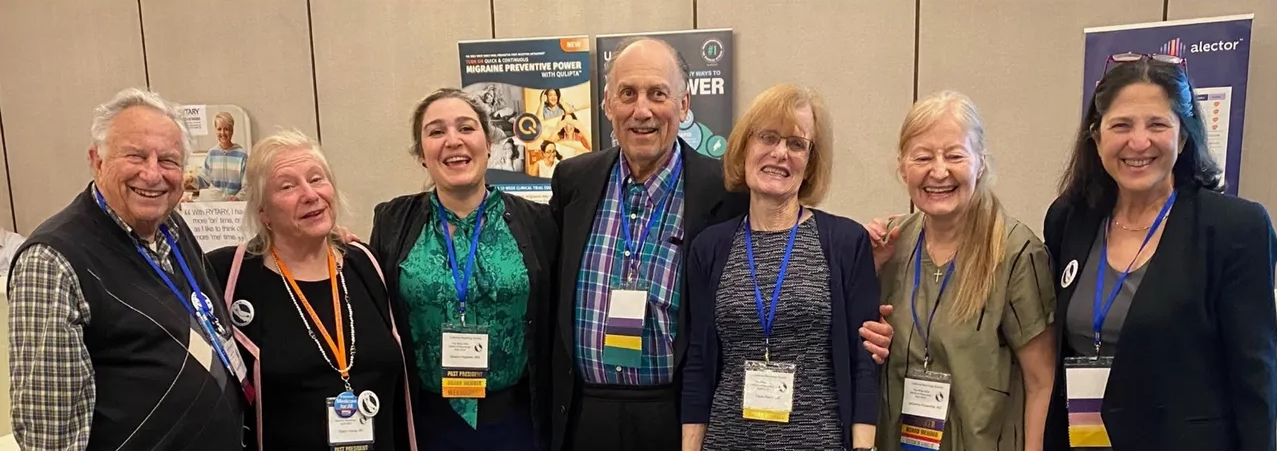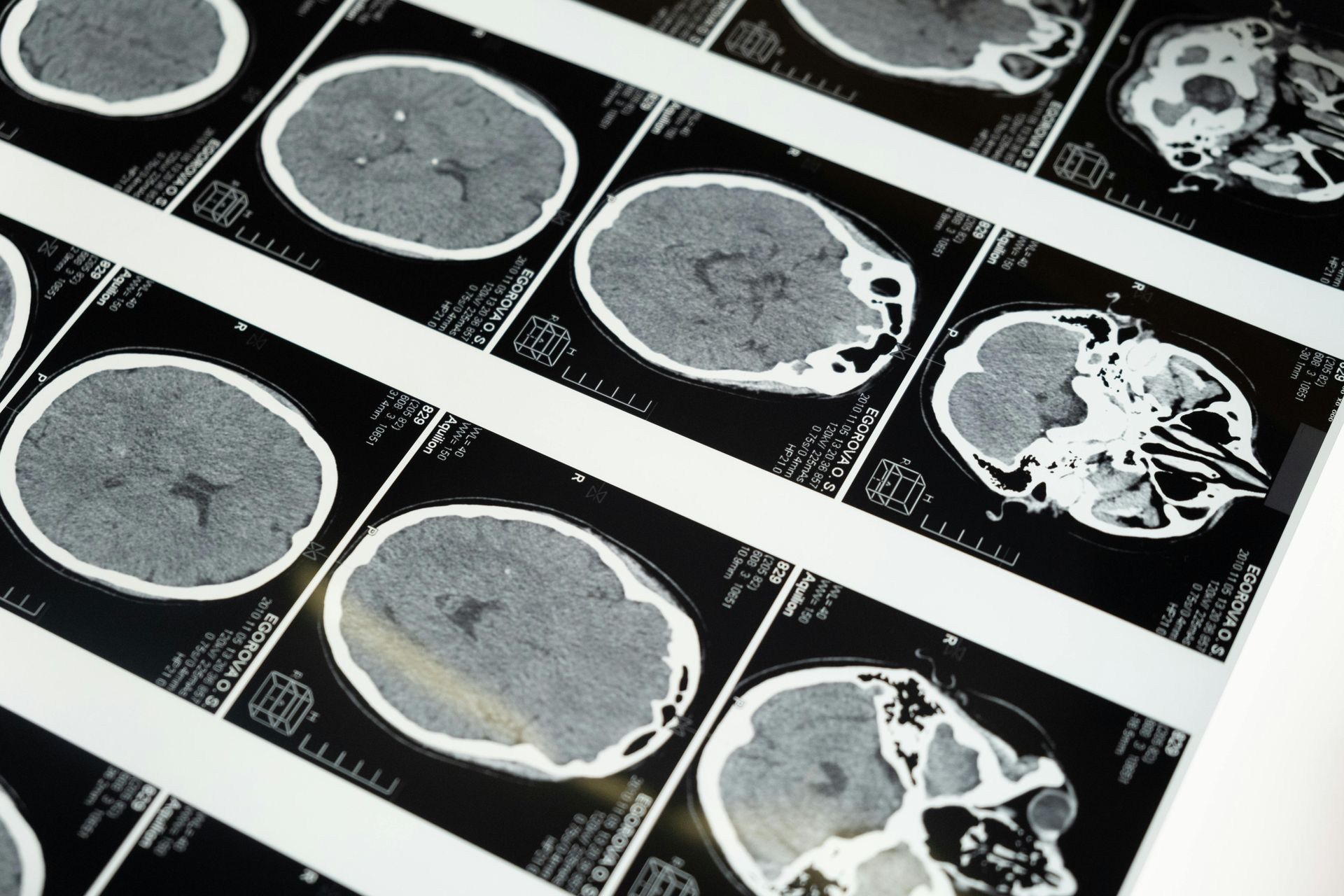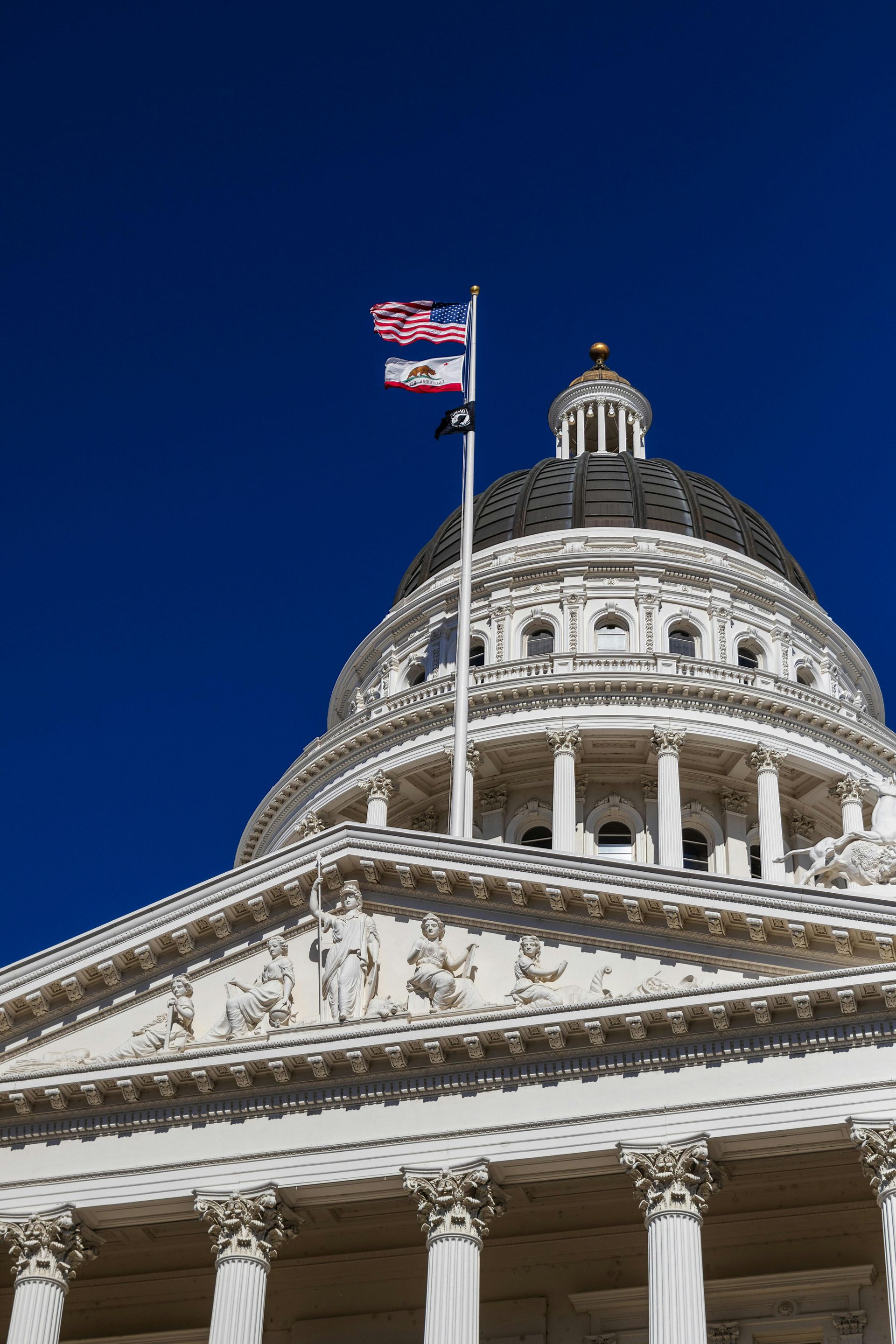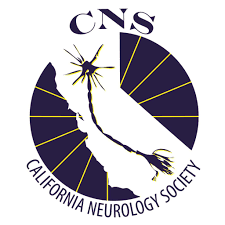CNS Legislative Committee MEETING MINUTES - September 4, 2024
September 4, 2024
Legislative Committee Meeting Minutes
Lecture by Paul Matthews, MD, NBPAS, FAAN, FAHS
Here is a summary of the meeting:
1. Background on Grandfathering and Certification:
- Historical use of the term “grandfathered in” and its implications in the medical community.
- Current statistics: 80% of grandfathered physicians are white and 70% male.
- Lifetime certificates by ABMS grant elite status to physicians, leading to disparities.
2. Introduction of MOC (Maintenance of Certification):
- Instituted in 2007 to ensure continuous education, requiring recertification through self-assessment, improvement modules, and CME.
- Criticism: Increased workload on physicians with no clear evidence of improving patient care or physician competence.
3. Impact of MOC on Physicians:
- MOC added stress amidst existing responsibilities like patient care, prior authorizations, research, EHR compliance, and teaching.
- Studies, including Mayo Clinic, showed limited efficacy of MOC. Less than 15% of doctors found it beneficial.
4. Economic and Workload Burdens:
- Cost analysis (Annals of Internal Medicine, 2014) showed significant financial burdens:
- Internists: $16,000 over 10 years.
- Hematologist-Oncologists: $40,000 over 10 years.
- Physicians lose substantial time from patient care due to MOC courses and assessments.
- Total burden estimated at 5.7 billion in fees and 33 million hours lost from 2015 to 2025.
5. ABMS and ABPN Conflicts:
- Lack of reform despite criticisms and calls for changes to MOC.
- Revenue and administrative expansion are driving factors for continued MOC requirements.
- Financial discrepancies in ABIM, with millions in salaries and losses but no tangible benefit for physicians.
6. Rise of NBPAS (National Board of Physicians and Surgeons):
- Founded in 2015 by 20 physicians as an alternative to ABMS.
- Offers streamlined, evidence-based CME certification without contributing to physician burnout.
- Costs: $169 per year for two years, covering all specialties.
- Accepted by over 200 hospitals and health systems. NCQA and The Joint Commission also recognize it.
7. Physician Burnout and Retaliation:
- MOC contributes to burnout, with 25% of physicians leaving practice within 5 years.
- NBPAS offers a sustainable model and encourages physicians to use their certification for advocacy.
8. New Developments in MOC:
- ABPN introduced “MOC 2.0,” offering the option to complete assessments every three years or take an exam every 10 years.
- AMA passed a resolution on MOC but took no significant action.
9. Advocacy and Legislative Action:
- Push for hospitals to recognize NBPAS as an alternative to ABPN certification.
- Leadership in organizations like AAN and APA is becoming more inclusive and may be more open to reform.
- Discussion on integrating certification reforms into legislative efforts (e.g., SB636).
10. Next Steps and Strategies:
- Continue collaborating with other state neurological societies to urge reform.
- Encourage physicians to promote NBPAS certification within their hospitals.
- Engage hospital credentialing committees using the available NBPAS resources for bylaw changes.
- Explore advocacy efforts within CMA and national organizations to support certification reform.
---
Action Items:
1. Collaboration with Hospitals:
- Explore strategies to persuade hospitals to adopt NBPAS certification for recruitment and retention purposes.
2. Support for Physicians:
- Advocate for reducing the burden of MOC and push for more evidence-based, cost-effective CME options.
3. Legislative Advocacy:
- Consider adding board certification requirements to legislative efforts like SB636.
- Leverage support from other physician groups, such as APA and CMA, in these reform efforts.
4. Follow-up Meetings:
- Next discussion scheduled for September 18, 2024, to further address certification and legislative strategies.
---
The term Grandfather or “Grandfathered In” is an old term that was used to describe people that had bypassed voter registration laws.
Currently, the doctors that are “grandfathered in” as Board Certified by the AAN are 80% white and 70% male.
The policy was driven by contracts between the ABMS and the physicians with lifetime certificates still grant an unjustified elite status.
In 2007, the decision was made to institute MOC programs, and doctors certified AFTER that date were required to do MOC
recertification plus CME
· self-assessment modules and improvement in medical practice modules
· the change from recertification to MOC to strengthen the program and guarantee that physicians were current in ways not immediately available for testing
Someone thought that physicians have nothing better to do with all that free time [but in reality they have]:
· patient care,
· more patients
· less reimbursement
· prior authorizations
· scheduling peer-to-peer
· spending time on peer-to-peer
· research
· teaching trainees
· EHR compliance ICD 10 so
· CME
· family and social commitments
· institutional compliance modules
Coping strategies such as career counseling meditation and yoga don’t decrease the burden of the workload.
In 2014 ABPN/ABMS MOC information session
· who came up with the modules
· why the modules recommended
· what evidence is there that the modules improve
· why should I pay for modules pay for CME and pay $1500 to take the exam
· Mayo Clinic showed no hard evidence of benefit less than 15% of doctors thought the modules were helpful or that MOC was worth the time and effort
It was like marketing a new drug without testing for efficacy or side effects, but the ABMS employees received a large amount of money for crafting the institutional policy.
Annals of IM study 2014
· Cost analysis 10-year dollars cost analysis for Internists $16,000 dollars
· 10-year run for Hematologist Oncologist was $40,000 dollars
· Revenues far larger than actual cost of the programs
· One institution 1200 physicians and $2000 a year was 2.4 million every 10 years or 240,000 per year the money would be better spent on opioid crisis or covid or patient centered activities, there were Dr days lost to the hospitals
Lost Days from physicians taking time off for the courses less time for conferences, continuing ed, patients, personal time off.
The total was 5.7 billion in physician fees from 2015 to 2025 and 33 million hours over 10 years. This was equivalent to the workload of 1785 physicians over 10 years or not graduating eight medical school classes of physicians.
ABPN receives grants from ABMS to provide more products.
ABIM 6.5 million transferred to foreign accounts[?!]
The ABIM and The ABIM foundation lost $39.8 million [in] 2013, but during the same year paid $125.7 million to senior officers ABPN CEO making $3 million per year. Officers $300,000.00 to $400,000.
NBMS does use ABPN for initial certification.
ABMS gives money to ABPN for providing the modules ABPN would not accept a request for reform
http://www.changeboardrecert.com this group includes Dept Chair, Chief of Divisions, Members of NIH, Disciplines outside of Neurology,
but ABPN did not listen, Feb 3, 2015, ABIM announced apology and suspension of modules,
Feb 16, 2015, 9 letters with 1,100 signatures.
www.endmoc.com website established, no response from ABPN
The AAN agreed that Part IV was onerous, and urged repeal of Part IV of MOC and calls on ABPN to respond positively.
The APA position statement representing 36,000 Psychiatrists supported the elimination of Part IV of MOC
The ABPN said it had no recourse. “The ABPN believes strongly that it is bound to follow the ABMS MOC standards. On its own, the ABPN does not have the authority to eliminate any Part of the MOC without risking censure by the ABMS and jeopardizing the value of our diplomates’ certificates.”
From 1970 to 2015, the growth of management and administration, was 2500%
· Physician growth was less than 500%
Since the ABMS and the ABPN had no incentive to change, NBPS was formed.
· Initial certification by ABMS
· Valid License
· At least 50 hours of ACCME accredited CME
· Active hospital privileges
· Clinical privileges have not been permanently revoked
· Cost $169.00 per year for 2 years certifies all specialties by ABMS and AOA
· Must have active privileges in a hospital in that specialty so that you are not just a good test taker
· Multiple specialties, multiple institutional representation Harvard, Mayo, Dartmouth, UCLA, NYU
· Pro physician movement, the more support the better, can be ABPN and NBPS, DO’s that pass the AOA
· Think of NBPAS as a PAC donation
· Mathews Paul MD FAAN, multiple articles in multiple journals
ABIM retaliated, what do they have to hide www.newsweek.com/certified-medicalcontroversy-320495?pianot
2022 a new compromise from ABPN, they came out with “MOC2.0”, you can do a Complete Article Assessment every 3 years or an exam every 10 years
30 for one certificate, 50 for two certificates, 70 for 3 certificates 90 for 4 certificates
The AMA did pass a resolution, about MOC, but did not take any action
NBPS A nonprofit, founded in 2015 by 20 physicians, thought leaders in clinical and academic science
Goal support continuing and rigorous lifelong learning, clinical excellence professionalism, and patient care through evidence-based CME, streamlined, does not contribute to burnout, certifies 11,000 physicians in 50 states
Accepted by over 200 hospitals and health systems
The Joint Commission and the NCQA both certify
The NCQA also certifies it certifies insurance companies. And says it is acceptable for certification
CAQH, Medicare and Medicaid, CAQH URAC
NBPS Annual revenue $433,000. Dollars. ABIM 64.3 million, ABPN 23.1 million will all be a short one
25% of physicians leaving practice from burn out within 5 years of entering practice
Physician Side Gig group on Facebook $155,000 plus looking to build a career outside of Medicine
Physician shortage growing by 124,000 by 2034
Become an NBPAS diplomate where the pin on your lapel, put it DNBPS after MD or DO on your title start petitions at your hospital forms and petitions are available at NBPAS.org
Over hundred 47 hospitals excepting and BPA
Column A and 3 items from Column B
Credentialing is easier, NBPS in now Column A
Although the bylaws are not changed, the hospitals may be able to take NBPS
Paul Mathews has sample of bylaws change formats that you can send to your hospital
American Psychiatric Association now allows certification with ABPN and or NBPS
Low lying fruit: try to work with the other State Neurological Societies have them sign on to a letter to the AAN this is how the state societies and memberships feel
How is the best way to persuade the hospitals? Point to the other hospitals, for recruitment and retention, we need to follow suit.
This will save the hospital money and generate income power points available on the NBPS website.
Also, now on the NBPS? Website, information about insurance and NBMS credentials
What should CNS do? work with CMA leadership NBPS leadership in La Jolla at Scripps. The leadership in AMA not on board, but in the HOD the membership wants the change.
Leadership in AAN getting funds for membership, committees, until 10 years ago they were the prime members not for any dishonorable reason but became “attached “to the reimbursement. The AAN had a lot of pressure from Paul Matthews, as younger generation move into position, but also APA may be understanding the burn out and are more able to understand it.
Leadership in AAN more diverse and inclusive. If there is an argument to encourage NBPS instead of MOC it has more of a chance to be successful.
PA and NP’s what to do about the lack of skill?
Try to get hospitals to use doctors that did not match instead.
· 10,000 physicians enter the match and don’t match sidelined for a year Oregon and Missouri they can get a license and work under a licensed physician.
Tell the hospitals that they can get these employees, and then they can work with a graduated salary structure to make money pay off loans if you hire them instead of NP and PAs now are mostly getting a PGL would be better than a NP or PA,
There are not enough residency slots Medicare and Medicaid fund the slots, Biden has passed a bill to increase. Unmatched are not all FMG
Often FMG’s are doctors in their own country, and their skills are outstanding.
He will be at our Spring 2025 conference clinical and Advocacy
For Credentialing, there are slide sets for NBPS on the website about MOC, credentialing, advocacy etc.
For a short amount of time Independent Medical Board, weakened the idea of ABPN and ABMS, so they did not continue with Independent Medical Board, ?? UCNS not recognized, so now headache Neuroctit will have to be ABPN
Bob Weinberg brought up SB636 the AAN has “calls for action,” where you get an email, and it leads to a letter to your own legislator” Paul will be sending out the article.
Should we add board certification to SB636, licensed and Board Certified?
We may want to do a preset letter on our website for objectives
The Ledge meeting 3rd Wednesday can take up these themes again September 18, topic on our Agenda Wednesday
for DOJ and FTC and
Steve Holtz suggested e mailing Paul and asking him
for some more specific game plans for recertification
Step A , B , C
For the September 18, 2024 meeting
Vote on whether we want to do each of these steps:
a) Have a formal letter and preset information to give to our own hospitals on our website, the best way to encourage the hospitals is to remind them about the other hospitals that have mad changes. A Headache specialist just got up a petition to his hospital we can use powerpooints from the NBPS and use the other stakeholders that have already agreed to this particularly documenting the insurance.
b) Try to do a joint project with CMA about changing from ABMS to NBPS in California
c) Have The NBPS Board president from SCRIPPS come and talk to our meeting
d) Try to do a joint project with the AMA about switching all credentialing after passing ABMS
To NBPS
e) Send a letter from CNS to the Joint Commission for Hospital Accreditation
f) Reiterate that we want to be a viable alternative
g) Reach out to other State Neurology Societies to get our National AAN and ABPN to change so that as a group we affect the leadership of the AAN and ABPN











